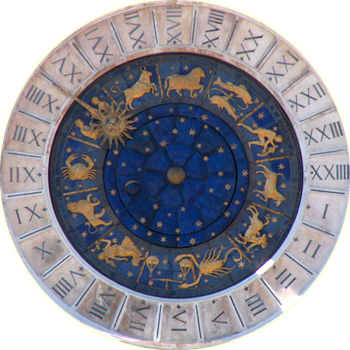
Western astrology
Western astrology is the system of astrology most popular in Western countries. Western astrology is historically based on Ptolemy's Tetrabiblos (2nd century CE), which in turn was a continuation of Hellenistic and ultimately Babylonian traditions.
Western astrology is largely horoscopic, that is, it is a form of divination based on the construction of a horoscope for an exact moment, such as a person's birth as well as location (since time zones may or may not affect a person's birth chart), in which various cosmic bodies are said to have an influence. Astrology in western popular culture is often reduced to sun sign astrology, which considers only the individual's date of birth (i.e. the "position of the Sun" at that date).
Astrology is a pseudoscience and has consistently failed experimental and theoretical verification.[1][2][3]
Astrology was widely considered a respectable academic and scientific field before the Enlightenment, but modern research has found no consistent empirical basis to it.[4][3]